
Where We Be
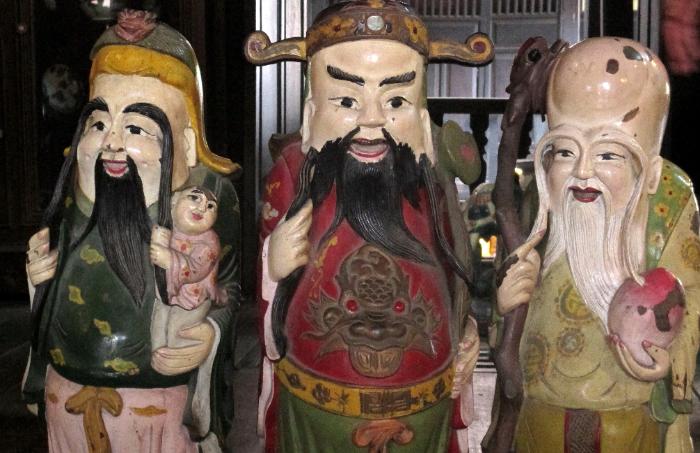




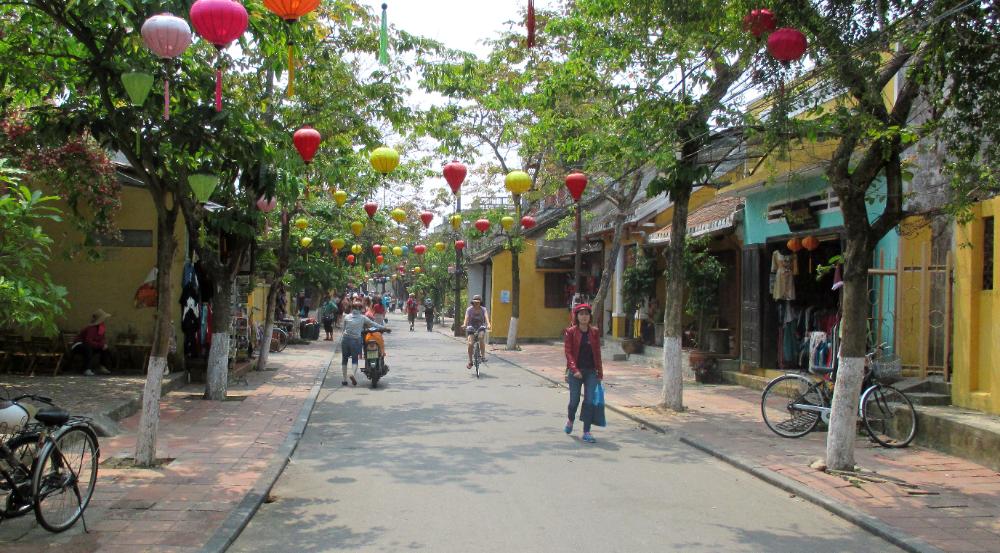
| Hoi An is a gorgeous, upscale town with a romantic ambience. It will instantly appeal to most Westerners. |
| Hoi An, Vietnam |
| This bridge crossing the river represents the center of town |
| This traditional covered Japanese Bridge from the 16th century once separated the divided Japanese settlement from the rest of town |
| It's a pleasure walking around Hoi An with its many pedestrian-only streets. The UNESCO World Heritage Site is one of the best examples of a Southeast Asian trading port from the 1400s to 1800s. |
| The town is fun to explore. If you visit just one place in south central Vietnam, this would be our pick. |
| Be sure to wander the town after dusk when all the lanterns are lit. You can even buy a candle in a paper box and float it down the river. |
| This lit-up sign decorates the main bridge |
| You can also buy clothing at great prices right off the rack. We bought these silk robes as gifts. |
| The colorful lanterns really add to the ambience |
| The rest of this page highlights a few of the cultural sights in Hoi An. Our first stop was one of the best -- the Cantonese Assembly Hall. |
| The central courtyard and surrounding buildings are ornately decorated with statues and carvings |
| If you like vibrant colors and an almost childlike exuberance -- this is your place! |
| Huge spirals of incense hang down over proud horses |
| Tan Ky is a two-story late 18th century shophouse of a wealthy merchant. We were served tea here and given a short tour. |
| This private merchant's house is built around an open courtyard. It is filled with antiques -- all of which need to be lifted to safety when the house floods nearly every year -- as shown by the yellow flood stage markers on the wall! |
| Gorgeous pearl inlay work is one of the highlights of Tan Ky House. The central image above is an elaborate Chinese character with a bird motif. |
| First you pass through a courtyard filled with statues and flowers |
| This is another strong contender for best assembly hall in Hoi An (built 1697) |
| Topiary graces the entry courtyard |
| We particularly liked this dramatic 3D painting of a blue-faced warrior charging into battle |
| The inner sanctum is filled to the brim with statues, icons, calligraphy, gold filigree, and incense spirals |
| Some of the statues are traditional, others boisterously creative |
| This well-preserved historic merchant's home across from the Japanese Bridge features these three jolly old men standing right in the middle of the first floor |
| We chose this last assembly hall out of some twenty others in town because of the exquisite wood carvings surrounding the central "altar" |
| Each assembly hall and merchant home takes only about 10 to 15 minutes to visit, but by the end you're left with an overall sense of Hoi An's rich cultural heritage |
| Hoi An is famous for its tailor shops, where custom-fitted clothing can be made for you in just a day or two at terrific prices |
| Each day we would go for a swim in the rooftop pool at our conveniently located Hotel Vinh Hung 3 |
| At The Little Menu, we had tender red snapper topped with minced pork and mushrooms, followed by a decadent white chocolate mousse with passionfruit topping |
| One of the pleasures of visiting Hoi An is dining out on delicious food at reasonable prices |










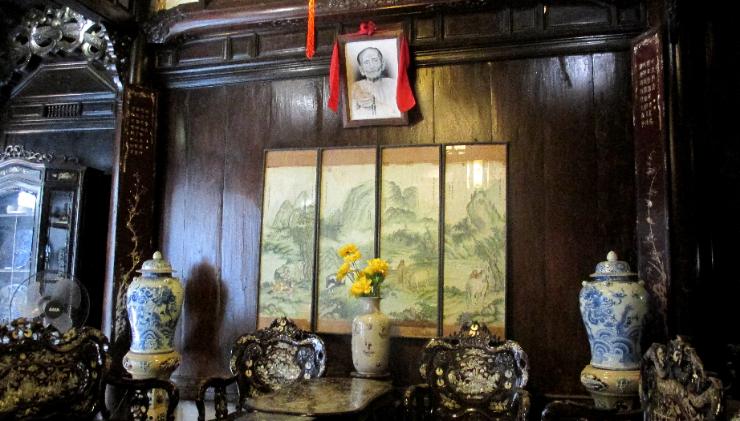



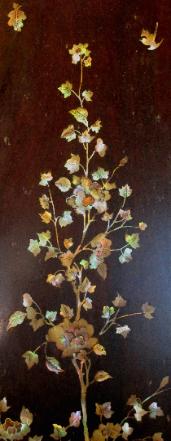
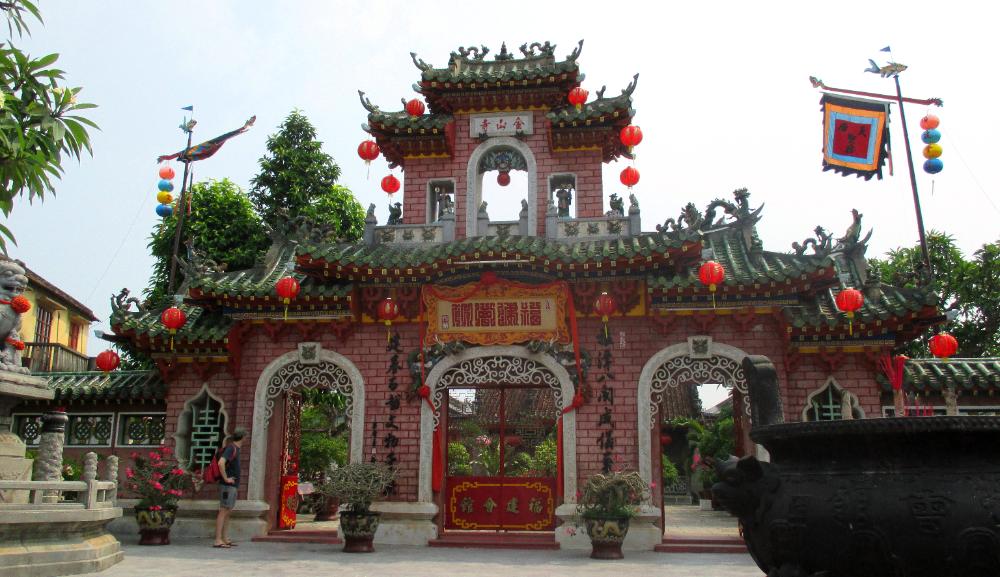















Hoi An is a lovely river town, especially in the
evening when all the round Chinese lanterns
are lit. Many of the streets are pedestrian-only
and filled with boutique shops and restaurants.
The sheer number of shops for clothes, leather,
personal tailoring, art, and knick knacks make
this a shopper’s paradise. It's also a foodie town
by any standards. You could eat in a different
restaurant every day for a month if you wanted
to, but we preferred finding a few favorites and
trying different scrumptious dishes on the menu.
It's worth spending a "culture day" here. For
less than $10 each, you can buy a ticket that
entitles you to see five different cultural sights
in town. Historically the Chinese in Hoi An
organized themselves based on which part of
China they were from, with each group striving
to build the most elaborate assembly hall. We
visited three of these, as well as two historic
merchants’ homes and a lovely Japanese bridge.
evening when all the round Chinese lanterns
are lit. Many of the streets are pedestrian-only
and filled with boutique shops and restaurants.
The sheer number of shops for clothes, leather,
personal tailoring, art, and knick knacks make
this a shopper’s paradise. It's also a foodie town
by any standards. You could eat in a different
restaurant every day for a month if you wanted
to, but we preferred finding a few favorites and
trying different scrumptious dishes on the menu.
It's worth spending a "culture day" here. For
less than $10 each, you can buy a ticket that
entitles you to see five different cultural sights
in town. Historically the Chinese in Hoi An
organized themselves based on which part of
China they were from, with each group striving
to build the most elaborate assembly hall. We
visited three of these, as well as two historic
merchants’ homes and a lovely Japanese bridge.

| Cantonese Assembly Hall (Quang Trieu) |
| Tan Ky -- Historic Merchant Home |
| Fujian Assembly Hall (Phuc Kien) |
| Phung Hung -- Historic Merchant Home |
| Chauzhou Assembly Hall (Trieu Chau) |

| "3D" paintings add a fun element |


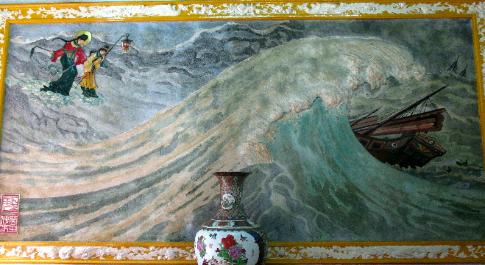
| Inside are some vivid paintings -- this one of a shipwreck |


